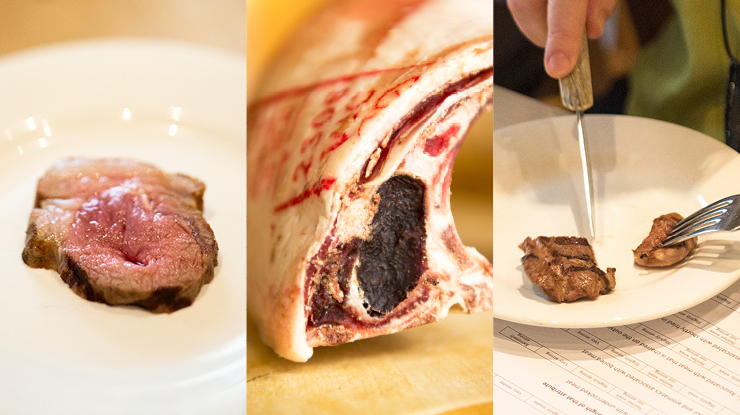
Mutton on the menu
Don’t be too quick to let go of your older ewes – new research is looking into the emerging trend of dry-aged mutton and how producers could one day take advantage of potential premiums.
Pilot research on dry ageing sheepmeat with SA-based restaurateur Tim Burvill soon evolved into a new MLA-funded project to examine if dry-aged mutton could be a lucrative market for Merino producers.
Potential for premiums
University of Melbourne researchers Professor Robyn Warner, Hollis Ashman and Melindee Hastie managed the project, which found meat from five to eight-year-old Merino ewes was desired by consumers and could attract a premium of $35/kg.
The project focused on:
- gathering market insights
- development of a best practice process for dry ageing sheepmeat by testing the eating quality and willingness of consumers to pay for it
- the needs of consumers and end users.
It involved processing 81 multi-purpose Merino ewes (supplied by Ben Duxson of Marnoo, Victoria) aged between three and eight-years-old, and dry and wet ageing the carcases for two, four, six and eight weeks.
"The multi-purpose Merino is an animal bred for wool and meat production with genetic traits supporting both. After 2,000 or 3,000 happy days on earth, our ewes may no longer be of value for reproduction but, as they were bred for their meat as well, can offer a high quality carcase," Ben said.
"Dry ageing was seen as a means of improving the eating quality of sheepmeat now considered mutton and helping it become a niche eating experience."
Put to the test
Taste testing using the Meat Standards Australia tasting protocols was conducted with 540 consumers (from a range of different cultural backgrounds) eating their way through 3,240 samples of loin and leg cuts.
As a group, the consumers weren’t able to detect the difference between wet and dry aged mutton; however, on segmenting the groups by cultural heritage, it was found those of a European heritage preferred the dry-aged meat.
Market research found Asian and Australian consumers identified dry-aged mutton as a premium offering. While Australians tended to enjoy it more as a standalone ingredient, Asians saw it as a component of a dish. Australians were also keener on the leaner cuts, while Asian consumers went for marbling. Both groups rated the rack/loin cuts highly.
Making the most of every cut
The project also engaged chefs to develop cooking and utilisation recommendations and to showcase the product to foodservice. They found mutton had different cooking requirements to lamb and was ideally suited to slow braise and sous vide cooking techniques.
"A challenge we had was to optimise the value from dry ageing a whole carcase, so the project established ideal ways to utilise every cut like rumps were ideal for sous vide and mince was a good option for convenience and versatility," Melindee said.
The research found a high yielding carcase with a fat score of 3 or more is ideal. To minimise shrinkage, dry ageing a whole mutton carcase is advised; however, there’s no benefit to dry ageing shanks as they lose too much yield.
A matter of supply and demand
Ben Duxson, who participated in the taste testings, was blown away by the quality of the product and said this research paves the way for a producer or processor with scale and capacity to create a high quality product.
"I'd love to do it but I think once the product gets out there, the demand will be pretty big and you need to have plenty of old ewes consistently available to supply the market," he said.



